Changsha’s booming cultural tourism over past decade
2022-10-27
“Traveling to Changsha” has hit the headline frequently in recent years.
Changsha has witnessed new advances in its cultural undertakings and cultural tourism in the past decade.

Cultural tourism connects social and economic development with people’s better life. The high-quality public cultural services can be a magnet for talent, projects and industries.
As one of the first batch of six national standardized demonstration areas for public cultural services and the first culturally prosperous city in Hunan Province, Changsha takes the lead in public cultural construction with increasingly refined facilities and systems.
Changsha has strengthened its weak links in public cultural facilities over the past decade.
Major cultural facilities have been built like libraries and cultural centers in Furong District and Yuelu District, Longping Rice Museum and Tongguan Kilns Archaeological Site Park. According to national standards, 170 general cultural centers at township (sub-district) level and 1,100 general cultural service centers at village (community) level have been established beyond expectation. It also completed the construction of 150 library branches, 15 subway self-service libraries, 93 circulation service points, 27 24-hour self-service reading rooms and 50 cultural center branches.
By making the most of social resources, Changsha has built 86 new public cultural spaces to allow citizens to enjoy convenient services nearby. It has given support to 17 private museums, 80 physical bookstores and 14 intangible cultural heritage studios, and also built high-level arts organization for public welfare. A batch of private art galleries like Li Zijian Art Museum and Xie Zilong Photography Museum have become Internet-famous places and new iconic cultural buildings.
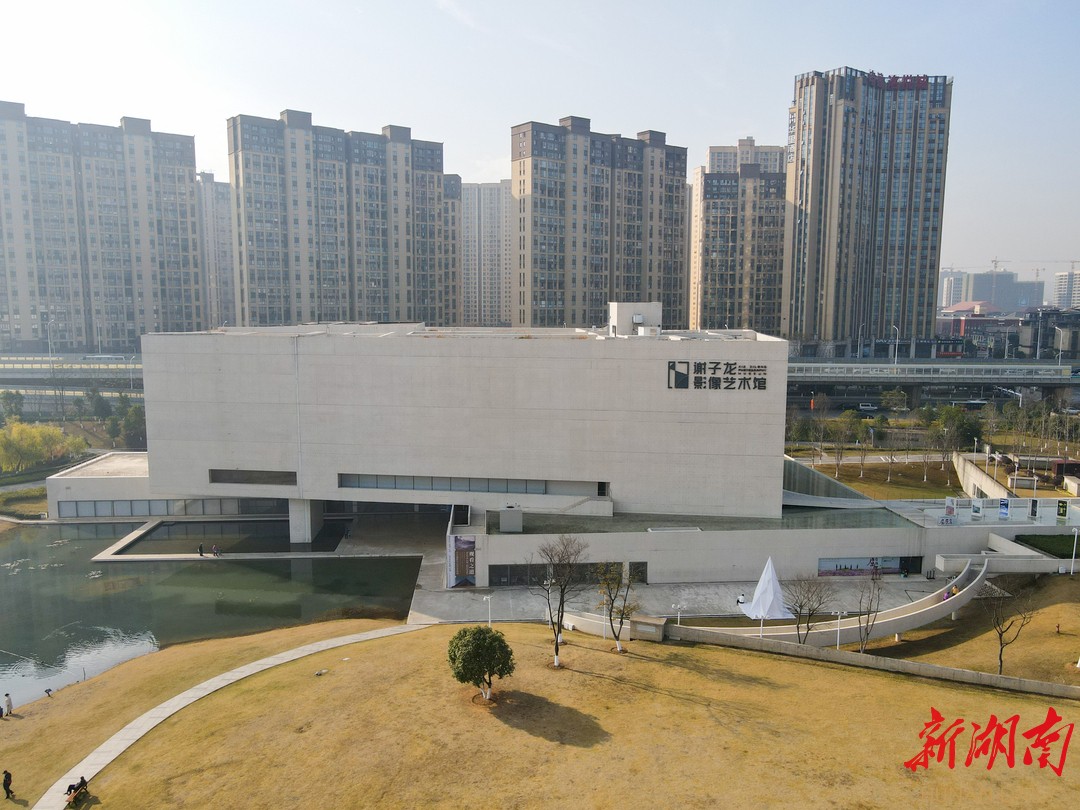
The cultural venues and interconnected digital cultural service network covering urban and rural areas have improved the cultural services in Changsha. Thanks to these places and infrastructures, culture can be disseminated in every corner of the city.
Changsha has proactively launched public cultural activities in recent years, including an annual average of over 1,200 dramas, 100 exhibitions and 200 lectures. It has organized a public art popularization alliance and built 15 art training community branches, where cultural forms like rap, hip-hop and dramas have been included in the service scope, delivering benefits to more than 200,000 people. By mobilizing social forces and integrating lectures, theaters and buildings, it holds 1,000 lectures and education activities, 1,000 performances and 100 exhibitions every year, with more than 40 million participants in total. The masses have become the protagonists of public culture.
The past decade has seen breakthroughs in art creation of Changsha. The Hunan Opera “Tian Han” and the Flower-drum Opera “Pig Commander” have gained the affirmation and support of the Ministry of Culture and Tourism of the People’s Republic of China. 31 projects like “Hu Yaobang Returns to Home” and “Protect the Country” have been shortlisted for the National Art Fund, with nearly 200 national tours. The opera of “Half a Quilt” has been honored with “2020-2021 Chinese National Opera Inheritance and Development Project” and “Celebration of the 100th Anniversary of the Communist Party of China Stage Art Creation Project”, and then included in the repertoire of the 13th China Art Festival. Changsha is expected to contribute more quality works of art to urban culture.

It has independently launched cultural festivals such as Rhododendron Art Festival, Changsha International Music and Art Season and Yuelu Mountain Youth Drama Festival, attracting many art lovers at home and abroad. In the past ten years, Changsha has adhered to an overall planning and innovatively integrated the protection and inheritance work into economic and social development, so as to inject new vitality into historical and cultural relics.
At present, there are 2,413 immovable cultural relics, 42 museums, over 300,000 state-owned cultural relics, 1,366 intangible cultural heritage projects and 164 representative inheritors of intangible cultural heritage in Changsha. It has successively implemented organic renewal of 14 historical and cultural blocks, streets and lanes like Baiguoyuan Street and Chaozong Street. More than 80 cultural relics and historical buildings have been protected and renovated, and historical trails have been built for about 70 kilometers. It has also carried out the identification and registration of cultural relics, established a database of cultural relics resources, and spearheaded a new model of cultural relics safety management in China. Such places as Tanheli National Archaeological Site Park and Tongguan Kilns Archaeological Site Park have been completed and put into operation, and projects like the second phase of Jia Yi’s Former Residence have been accelerated. All of these efforts have been made to retain the “root” and “spirit” of Changsha.
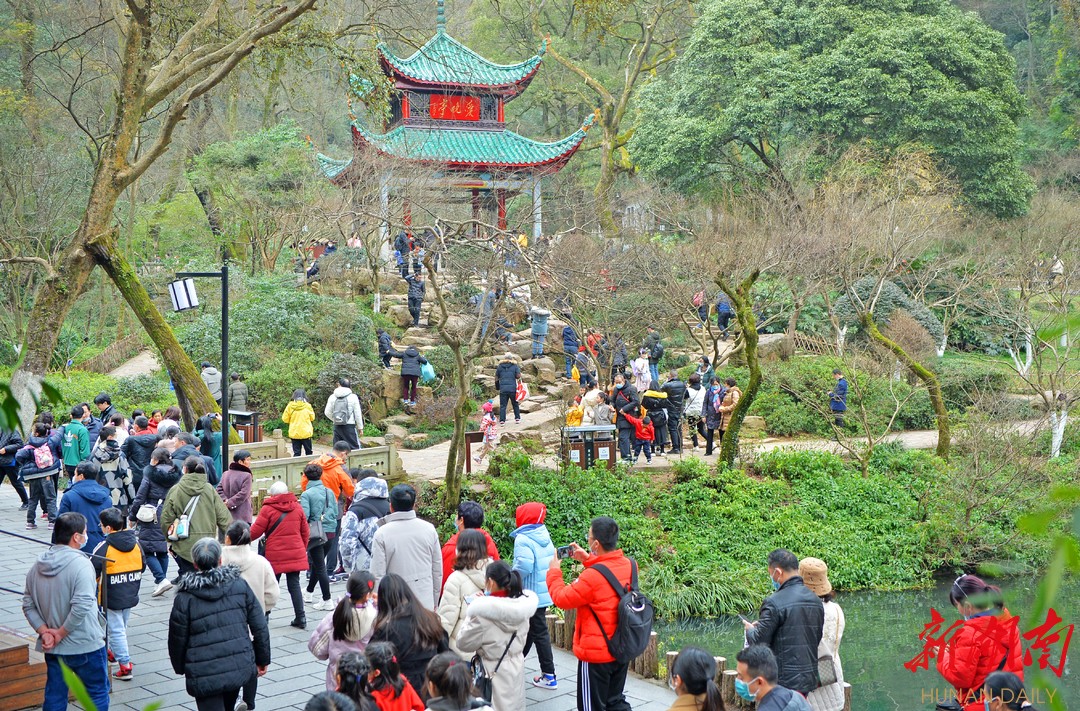
The high-standard public cultural services greatly boost the happiness of citizens in Changsha. Among the 21 satisfaction indicators for urban governance capabilities and social services, Changsha ranks first in China in terms of satisfaction with public cultural services.
Changsha is shaping the connotation and quality with culture, and the sharing of cultural achievements also injects new vitality into the millennium urban context.
Innovation and upgrade
Yazipu, where the Liuyang River bends over, was just a wasteland in Changsha before 2017. Today, it has become a nationally renowned cultural park, Malanshan Video Cultural & Creative Industrial Park.
In 2021, 805 new enterprises registered and settled in Malanshan Video Cultural & Creative Industrial Park, where attracted a total of more than 3,600 enterprises. The revenue of enterprises reached 50 billion yuan, with a year-on-year growth of 25%. Compared with the period when the park was newly completed, it has increased by 16.8 billion yuan.
As one of the most impressive cultural and creative representative cities of media arts in China, Changsha insists on cultural creativity, technological innovation and brand creation. Efforts have been made to promote the creative transformation and innovative development of cultural and tourism resources, and speed up the construction of an “international cultural and creative center”.
From being awarded the “Culture City of East Asia” to joining the global “Creative Cities Network”, Changsha became the first city in China to win the crown of “City of Media Arts”. Changsha has closely connected with the national “Belt and Road” Initiative and the cultural “going globally” strategy to accelerate the spread of Chinese culture overseas.
In recent years, over 1,000 international exchange activities have been held in Changsha, like the International Youth Forum on Creativity and Heritage along the Silk Roads as well as the ASEAN-China Culture and Tourism Week, making the “voice of Changsha” heard in the international cultural arena.
Changsha has also been rated as one of the first batch of national culture and technology integration demonstration bases and national cultural export bases. 60 enterprises and 11 projects have been selected as national cultural export key enterprises and key projects. Four projects have been accepted as key projects of the “Belt and Road” international cooperation in cultural industry and tourism industry. In recent years, Changsha has introduced and cultivated influential cultural and tourism brands. Through cultural excavation, theme setting and cross-border integration, it has continuously enriched new business forms, new scenes and new modes of cultural and tourism development to enhance the overall competitiveness of Changsha’s cultural and tourism industry.
In July 2020, a huge mine in the Xiangjiang New Area, which was formed in the past because of cement production, became an Internet-famous site.
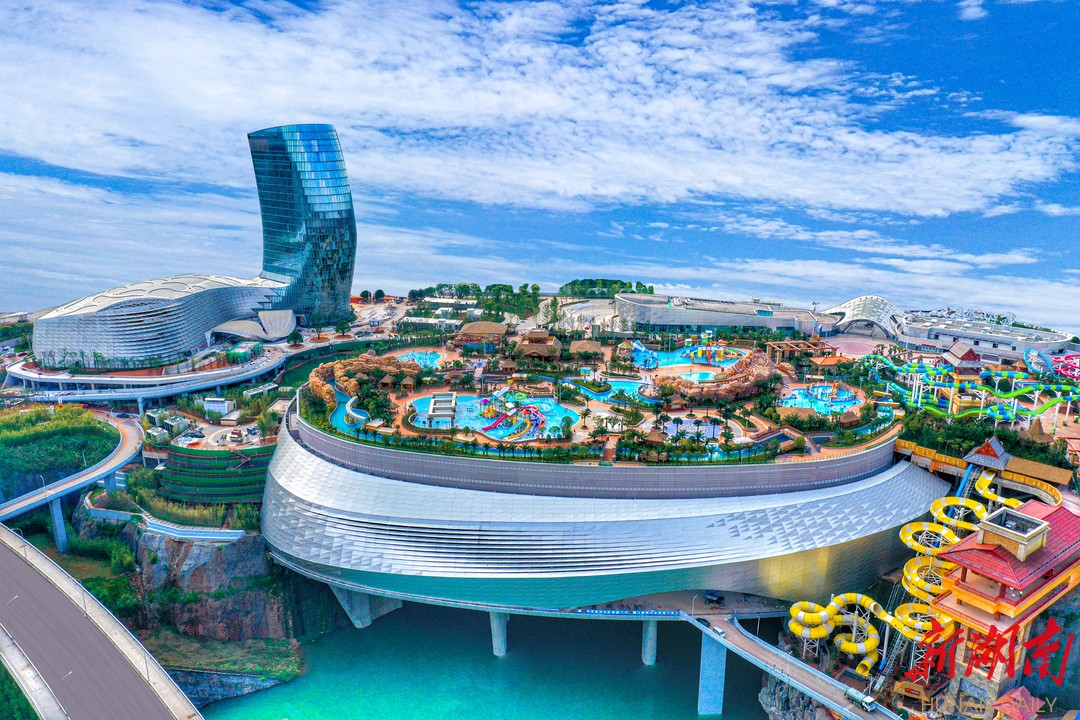
In recent years, landmark cultural tourism projects have sprung up in Changsha, like Xiangjiang Happy City, Tanhe Ancient Town, Tongguan Ancient Town, HB Town and Changsha Oriental Heritage. The major cultural tourism projects have expanded the imagination space of cultural tourism industry.
In the course of continuous development, Changsha has formed an all-factor and multi-format system of tourism and leisure, performing arts and entertainment, film and television media, publishing and distribution as well as digital video. Well-known brands have also been developed such as “Hunan TV Army”, “Hunan Publishing Army”, “Hunan Animation Army” and “Hunan Performing Arts Army”. A famous cultural and tourism city combining tradition with modernity, elegance and fashion as well as culture and economy, stands in the new era with more moving spirits and graceful style.
Cross-border integration of cultural tourism
With the era of consumption upgrading and cross-border development of cultural tourism integration coming in full swing, Changsha concentrates on creating new cultural and tourism consumption scenes, turning into an Internet-famous city. Over the past few years, Changsha has been listed on almost all kinds of online travel platforms and has developed into a tourist destination from a tourist transit station.
Since this year, Changsha’s cultural and tourism market has seen an impressive recovery. In recent years, Changsha has also often been on the list of “hot search keywords”, like the fireworks of the Orange Isle, the Xiangjiang River light show, heart-shaped traffic lights, pink crosswalks and “Pozi Street Police Station”. By means of new media communication and by taking advantage of “city + media” collaboration, Changsha has seized the “emotional value” and done various urban marketing.
At night, tourists can choose to enjoy light show along the Xiangjiang River, indulge in youth in West Jiefang Road, eat what they like at Dongguashan night market or read a new book in a 24-hour bookstore. The rich consumption choices not only extend the stay of citizens and tourists, but also stimulate cultural creation, marking a new form of pan-cultural-and-tourism consumption.
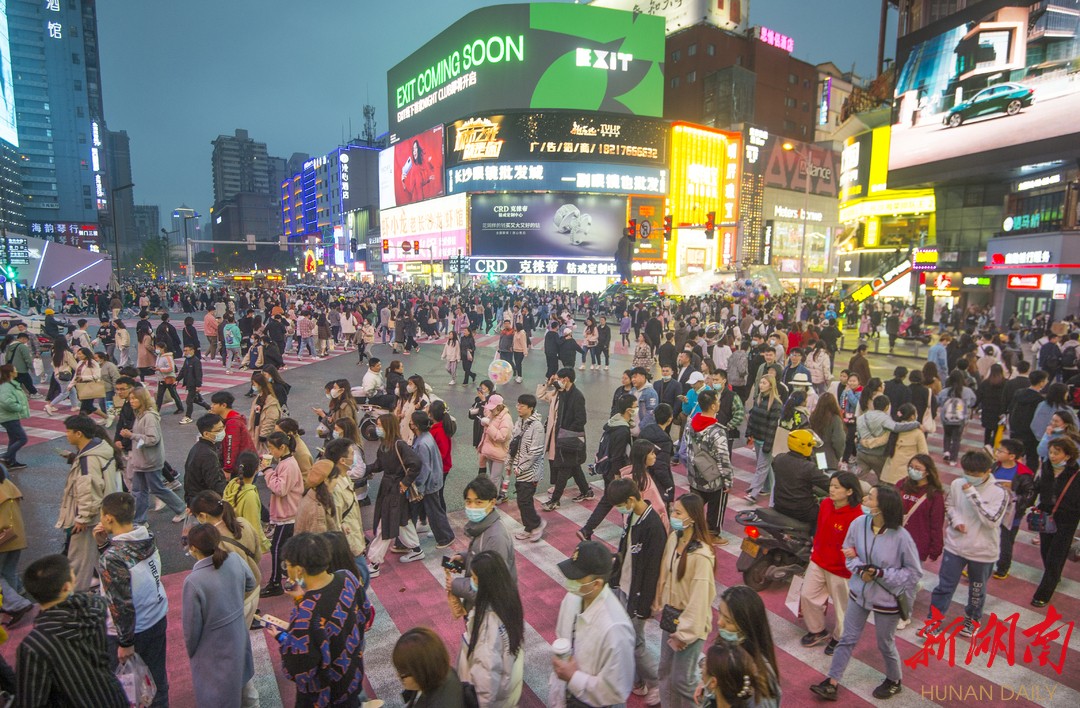
Changsha ranked second among the top 10 cities of China’s night economy according to the “China City Night Economy Impact Report (2021-2022)” released on August 6. Relying on the natural endowment, Changsha aims to create a “24-hour city”. Wuyi Square Business District, Sunshine 100 Fenghuang Shopping Street, the Meixi Lake Meilanfang Block and Hongxing Block have been selected as the national nighttime cultural and tourism consumption clusters. A number of special night consumption blocks coupled with the development of regional business circles and radiation function have emerged like Duzheng Street and Gaozheng Street. There are a lot of nighttime economy carriers with city brands and nighttime economy scenes with multi-industry integration.
The cross-border integration of cultural tourism in Changsha has also ushered in the era of mixed business operation in Changsha. As the local life boasts quality and tonality, tourists are willing to come and share. The tourists and local residents are assimilated into the common consumption market. A number of new consumption brands of cultural and tourism have come forward such as Wenheyou and Hey Hey Black, which are shared by tourists and local residents.
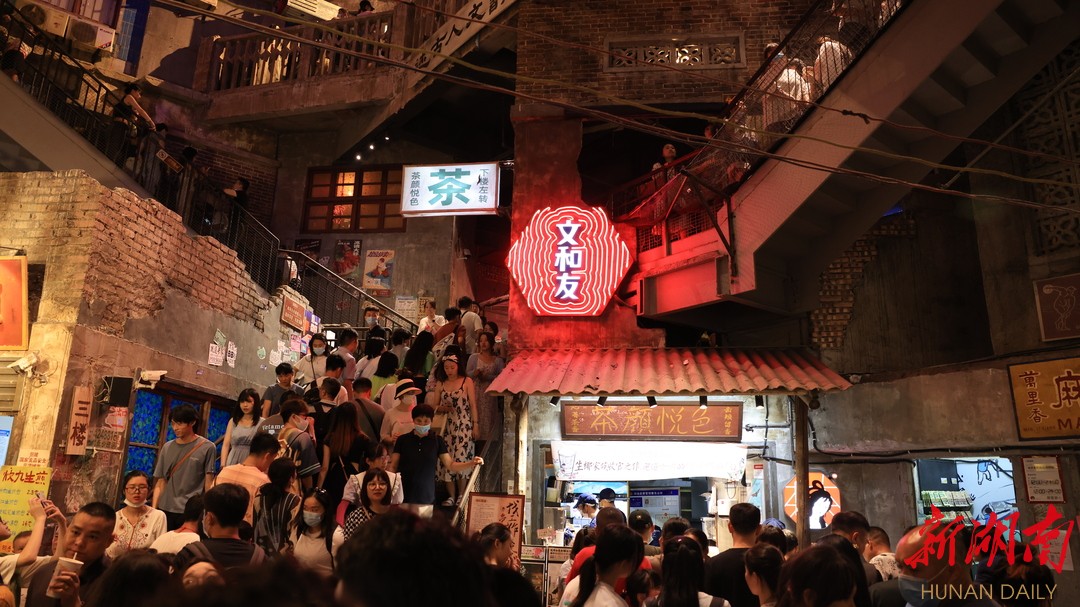
As one of the first batch of national culture and tourism consumption demonstration cities, Changsha has deepened the supply-side structural reform in the field of culture and tourism in recent years, focusing on the “top-level design, platform construction, cultural and tourism integration as well as brand building”. Changsha has formed the mode of “supply-led consumption and innovation-driven development” of cultural and tourism consumption after exploration, contributing to the high-quality development of Changsha’s cultural and tourism consumption power.
In order to make top domestic and international concerts as well as theater performances affordable to the public, Changsha invests nearly 30 million yuan every year to purchase public services from Changsha Concert Hall and the Meixi Lake Grand Theatre, ensuring that the ticket to each self-run performance is set at affordable prices. Meanwhile, Changsha has grasped the trend of mass tourism and all-in-one tourism to further develop a high-quality and sustainable ecological chain of cultural and tourism industry. Combined with changes in demand, the innovation of products, business forms and scenes are carried forward to generate “new products”.
The vivid picture of culture and tourism has been gradually unfolding with rich colors. Changsha is striving for further development with a young look and great vitality.


